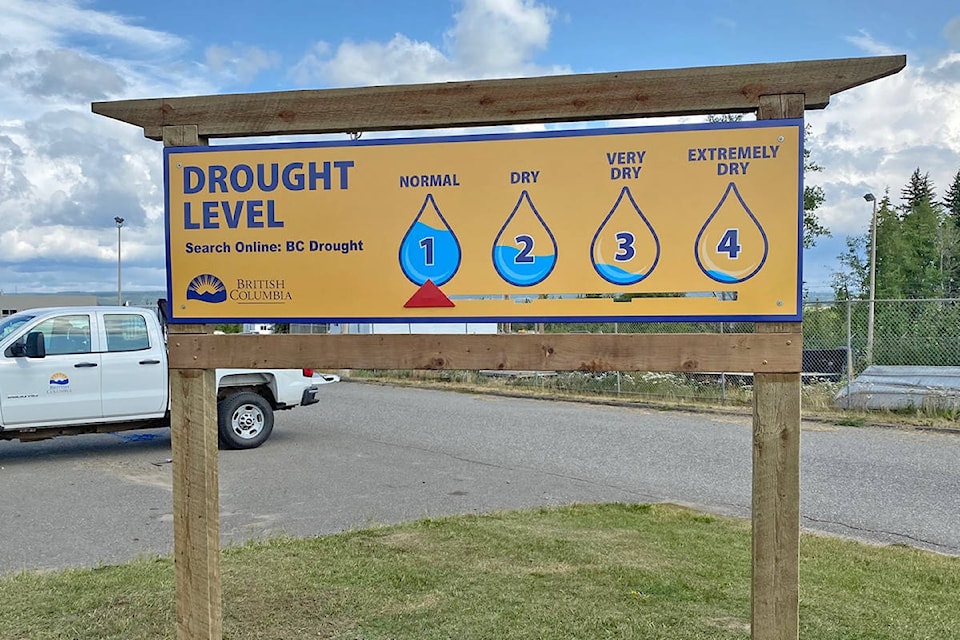You may have noticed a ‘Drought Level’ sign at the Stuart-Nechako Natural Resource District office in Vanderhoof which was installed in the summer of 2020.
Similar to the familiar ‘Fire Danger’ rating sign, the drought level sign indicates current conditions in the area related to water scarcity and drought. The drought level is determined by provincial water management staff by monitoring snowpacks, stream flows, groundwater wells and precipitation.
Being prepared to respond to drought will help communities protect water resources for drinking water, sanitation, fire protection, irrigation, as well as for fish and aquatic ecosystems. The drought sign is intended to inform the public of current dry conditions and to help them prepare by conserving water.
There are several things people can do. For example:
• Don’t overwater lawns. When watering, avoid the hottest times of the day or when it is windy to reduce evaporation.
• Consider alternatives to lawns such as planting beds of drought-hardy native and adaptive plants.
Read More: Dry spring can create wildfire trouble for Western Canada, experts say
Read More: Warm, dry summer expected across much of Canada, Weather Network predicts
In the Nechako Valley there are many farmers and ranchers that rely on rivers and streams for irrigation and animal use. Reducing potential impacts during higher drought levels may be achieved by:
• improving the efficiency of agricultural irrigation systems;
• considering water status from the previous season when planning the next year’s production; and
• speaking with agrologists and water management staff to discuss water needs and seek input on how to conserve water during times of drought.
At lower drought levels water conservation will likely be voluntary. However, in more severe conditions there may be legal requirements to regulate water use if voluntary efforts aren’t successful. By collaborating with water users before a severe drought water management staff are hoping to increase the success of voluntary efforts.
-Information was received from Jay Hallett, a water information technician with B.C.’s Ministry of Forests, Lands, Natural Resource Operations and Rural Development.
